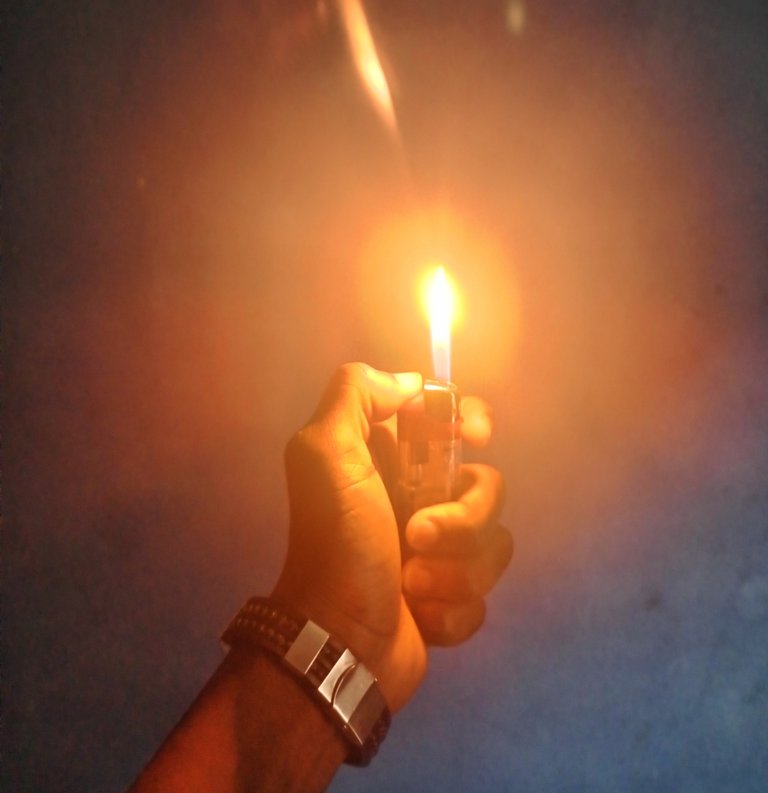Ever Wondered Why Flames Cast no Shadow ?
Did you know? According to science brought about by the undeniable help of scientists who have pulled all nighters repeated and consistently "Flames as we have them, can reach temperatures hotter than the surface of the sun, soaring up to an astonishing 1,832 to 2,552 degrees Celsius (3,330 to 4,600 degrees Fahrenheit)"
"Statistically, a single flame has the potential to ignite a profound change, for it only takes one spark to illuminate the darkness and set a course for transformation."
But
One thing, as bright, as dim, as big or small as a flame can be, ladies and gentlemen, it casts no shadows.
Here is 👇

Image taken by me
The question is why !? Even in a well illuminated room, put on a lighter, you need no genius mind to notice that the flame has no shadow.
Let take a look at what shadows are exactly, it might just give us some direction 👇
At its core, shadows are formed when an object blocks light.
When light rays are obstructed by a solid object, they cannot reach the surface beyond that object, creating an area of darkness, known as a shadow. However, flames are unique—they are not solid entities like most objects that cast shadows.
Flames consist of hot gases, typically from the combustion of a material like wood or gas. These gases become incandescent due to the intense heat, emitting light in the process. But here lies the crux of the matter: the translucent and gaseous nature of flames.
For a shadow to form, light must be obstructed. Solid objects achieve this by blocking the light, preventing it from reaching a surface. Flames, on the other hand, are not solid enough to block light effectively. Their translucent and gaseous composition allows light to pass through them, preventing the formation of a distinct shadow.
Furthermore, the structure of a flame contributes to its inability to cast a shadow. Flames are essentially composed of multiple layers with varying temperatures. The innermost part, where combustion occurs, is the hottest and brightest. As the heat moves outward, the outer layers become cooler, emitting less light.
You should notice that here, look closely 👇

Image taken by me
Because of this layered structure, the shadow that a flame might potentially cast would be faint and diffused. The lack of a solid, opaque surface and the varying degrees of heat and light emission make it nearly impossible for a flame to create a distinct, well-defined shadow.
Another factor to consider is the interaction of light with the flame's surroundings. Flames often emit light in multiple directions, illuminating the area around them. This scattered emission of light contributes to the absence of a noticeable shadow, as the light rays aren’t blocked consistently in a manner that would create a defined shadow.
In essence, the translucent and gaseous nature of flames, coupled with their layered structure and the scattering of emitted light, collectively contribute to the curious absence of shadows cast by flames. While flames produce light, they lack the solid structure required to effectively obstruct that light and create a distinct shadow.
Now you might be wondering why you need an understanding of this intriguing phenomenon, well understanding this thus sheds light on the intricate nature of light, the behavior of gases, and the curious exceptions in the world of shadows.
Remaining as a captivating subject to the amazememt of all, flames continue to spark curiosity and fascination as they dance and flicker, forever shadowless in their mesmerizing glow.
Thanks for reading keep shining 🌟 keep burn bright like a flame 🔥
https://byjus.com/question-answer/why-doesnt-fire-or-flame-cast-a-shadow/
https://www.wtamu.edu/~cbaird/sq/mobile/2015/12/01/can-a-fire-have-a-shadow/
https://www.google.com/amp/s/testbook.com/amp/physics/shadow-formation
https://www.kiwico.com/blog/the-science-behind/the-science-behind-shadows
All images are mine
Thanks for your contribution to the STEMsocial community. Feel free to join us on discord to get to know the rest of us!
Please consider delegating to the @stemsocial account (85% of the curation rewards are returned).
You may also include @stemsocial as a beneficiary of the rewards of this post to get a stronger support.